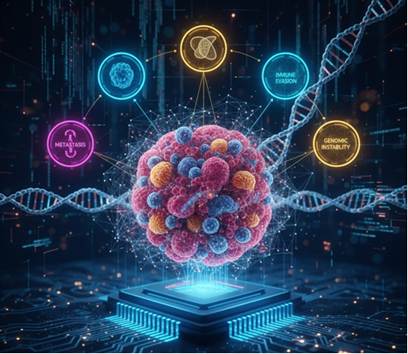Google has unveiled its latest innovation in the realm of quantum computing with the introduction of “Willow,“ a breakthrough quantum chip designed to tackle one of the field’s most daunting challenges: error correction. This achievement represents a significant leap forward in the pursuit of scalable and practical quantum systems, potentially unlocking a future of unprecedented computational capabilities.
A Quantum Revolution: Willow’s Breakthrough Technology
Quantum computing operates on qubits, which can exist in multiple states simultaneously, offering exponential computational power compared to classical bits. However, qubits are notoriously fragile, with even minor environmental disturbances leading to high error rates. This fragility has long hindered the development of reliable quantum systems.
Willow overcomes these limitations through an innovative approach to quantum error correction. Google’s engineers have integrated advanced algorithms and surface code methodologies to significantly reduce error rates, ensuring that quantum states remain stable for longer durations. This stability allows for more accurate and complex computations, addressing a critical bottleneck in quantum computing’s evolution.
Transformative Implications Across Industries
The development of Willow propels quantum computing from theoretical exploration into practical application, unlocking transformative potential across diverse fields. Its enhanced reliability paves the way for breakthroughs in next-generation cryptography, where quantum systems could both challenge traditional encryption protocols and pioneer robust, quantum-resistant security frameworks. In drug discovery, Willow’s precision in simulating molecular structures promises to accelerate the development of affordable, effective treatments, addressing critical global health challenges. The chip’s computational power also enables optimized modeling of complex systems, from climate simulations to financial market predictions, fostering better decision-making in areas like disaster response and economic planning. Additionally, Willow advances artificial intelligence by refining machine learning algorithms and processing massive datasets, driving smarter, more adaptive AI systems. Finally, the chip opens new avenues for fundamental physics research, allowing the simulation of quantum-level interactions and expanding the frontiers of both theoretical and applied science.
Challenges on the Horizon
While the Willow chip represents a monumental step forward, the road to fully functional quantum computing is still under construction. Scaling quantum systems, reducing energy requirements, and integrating quantum processors into existing computational ecosystems remain key challenges. Moreover, ensuring the equitable distribution of quantum technology will be crucial to preventing technological disparities.
The Quantum Future
Google’s Willow chip is a clear signal that the era of practical quantum computing is drawing closer. The advances it embodies could redefine industries, catalyze scientific breakthroughs, and revolutionize problem-solving in ways previously unimaginable. This achievement not only demonstrates Google’s leadership in quantum research but also sets the stage for a future where quantum technology becomes an integral part of global innovation.
As global industries prepare to embrace quantum computing, Willow serves as a beacon of what’s possible when cutting-edge research meets visionary ambition. With this milestone, Google has not only expanded the limits of quantum technology but also brought humanity closer to solving some of its most complex challenges.
Author Profile
Latest entries
Entreprenurs27 November 2025Distributed Digital Natives: How a New Entrepreneurial Class Is Rewriting Innovation Ecosystems
 News27 November 2025UNIDO Launches Vision 2050 and Industrial Development Report 2026, Outlining a Global Blueprint for Future Industrialization
News27 November 2025UNIDO Launches Vision 2050 and Industrial Development Report 2026, Outlining a Global Blueprint for Future IndustrializationDigital Talent6 March 2025Talent Arena 2025: A Game-Changer for Digital Talent, Sets Stage for Bigger 2026 Edition
 Uncategorised3 March 2025Mobile Operators Drive 85% of Investments in Mobile Internet Connectivity: GSMA Report
Uncategorised3 March 2025Mobile Operators Drive 85% of Investments in Mobile Internet Connectivity: GSMA Report












